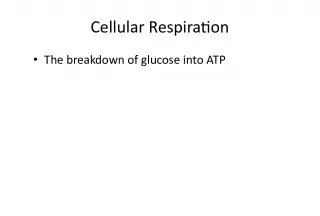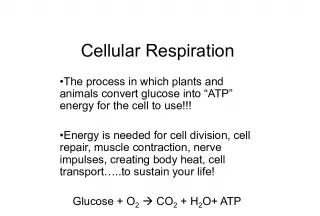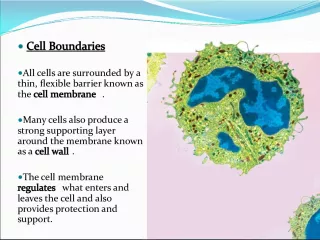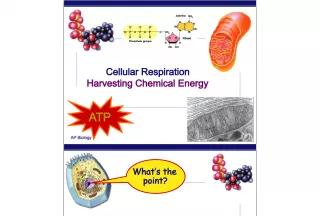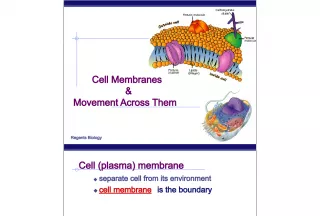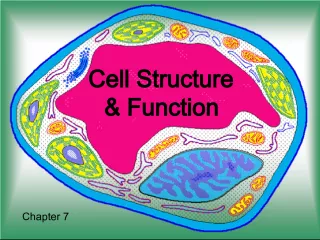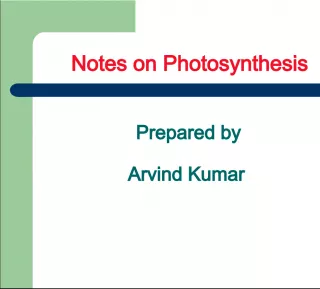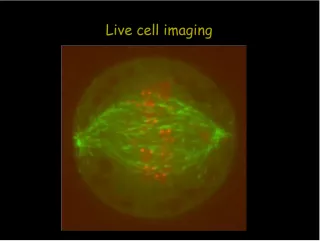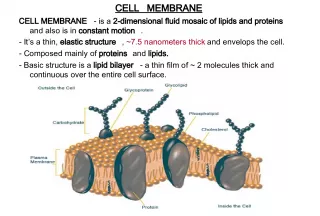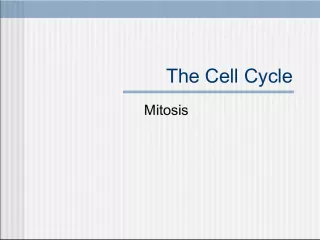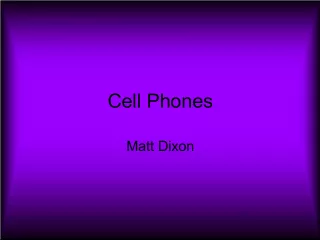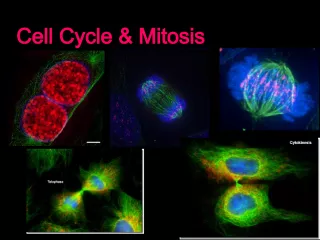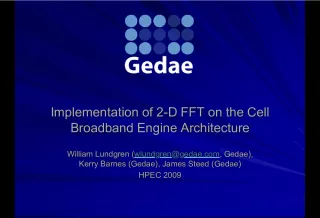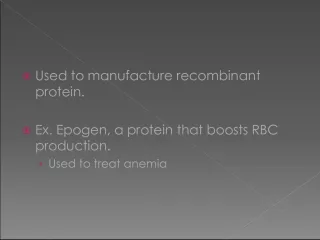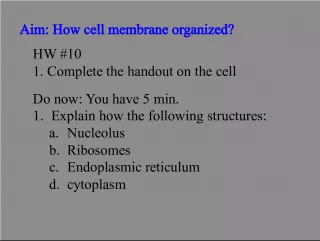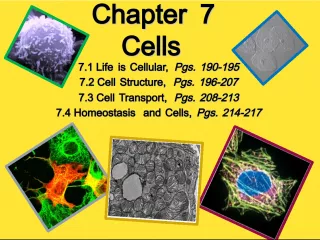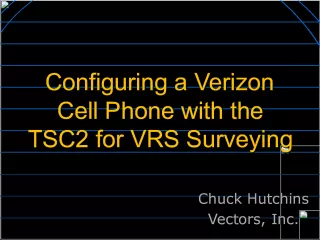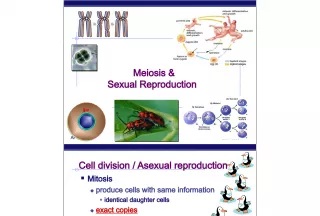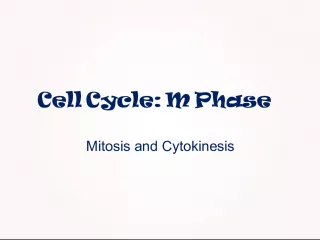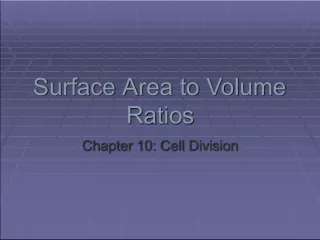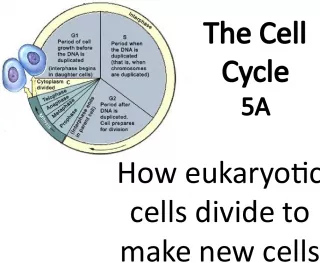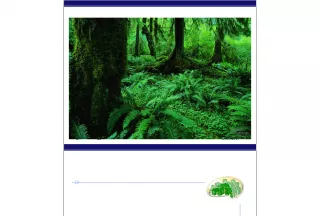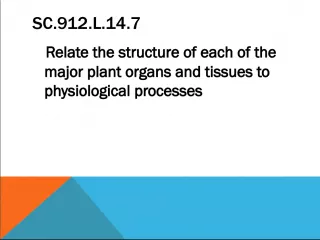CELL RESPIRATION


In chapter 9 of CP Biology at Paul VI Catholic High School, students will learn how breathing and respiration differ. While breathing allows for the exchange of oxygen (O2) and carbon dioxide (CO
- Uploaded on | 2 Views
-
 ariaevans
ariaevans
About CELL RESPIRATION
PowerPoint presentation about 'CELL RESPIRATION'. This presentation describes the topic on In chapter 9 of CP Biology at Paul VI Catholic High School, students will learn how breathing and respiration differ. While breathing allows for the exchange of oxygen (O2) and carbon dioxide (CO. The key topics included in this slideshow are . Download this presentation absolutely free.
Presentation Transcript
Slide1CELL RESPIRATIONChapter 9 CP Biology PAUL VI CATHOLIC HIGH SCHOOL
Slide2CELL RESPIRATION• Breathing and Respiration are not the same. • Breathing allows the exchange of O 2 and CO 2 between an organism and its environment. • In cellular respiration Mitochondria use O 2 and produces CO 2 as waste. CO 2 CO 2 O 2 O 2 Bloodstream Muscle cells carrying out Cellular Respiration Breathing Glucose O 2 CO 2 H 2 O ATP Lungs
Slide3CELL RESPIRATIONPhotosynthesis and cellular respiration provide energy for life – Cellular respiration makes ATP and consumes O 2 during the oxidation of glucose to CO 2 and H 2 O – Photosynthesis uses solar energy to produce glucose and O 2 from CO 2 and H 2 O CO 2 H 2 O Glucose O 2 ATP ECOSYSTEM Sunlight energy Photosynthesis in chloroplasts Cellular respiration in mitochondria (for cellular work) Heat energy
Slide4–Cellular respiration breaks down glucose molecules and banks their energy in ATP – -”Glucose” used in examples for convenience. Other organic molecules are also used as “food” – Glucose releases chemical bond energy, which the cell stores in the chemical bonds of ATP – Multi-step process not a single reaction C 6 H 12 O 6 CO 2 6 H 2 O ATPs Glucose Oxygen gas Carbon dioxide 6 Water Energy O 2 6 + + + Figure 6.3
Slide5CELL RESPIRATION– Electrons lose potential energy during their transfer from organic compounds to oxygen – When glucose is converted to carbon dioxide it loses hydrogen atoms, which are added to oxygen, producing water C 6 H 12 O 6 6 O 2 6 CO 2 6 H 2 O Loss of hydrogen atoms (oxidation) Gain of hydrogen atoms (reduction) Energy (ATP) Glucose + + +
Slide6CELL RESPIRATIONGLUCOSE CATABOLISM STAGE I: GLYCOLYSIS STAGE II: PYRUVATE OXIDATION STAGE III: KREBS CYCLE STAGE IV: ELECTRON TRANSPORT
Slide7CELL RESPIRATIONCellular Respiration Overview Video
Slide8Glycolysis harvests chemical energy byoxidizing glucose to pyruvate • ATP is used to prime a glucose molecule Which is split into two molecules of pyruvate NAD NADH H Glucose 2 Pyruvate ATP 2 P 2 ADP 2 2 2 2 + + Figure 6.7A
Slide9CELL RESPIRATION
Slide10CELL RESPIRATIONA. GLYCOLYSIS : occurs in the cytoplasm of every living cell 1. Glucose Priming : changes glucose into a molecule that can be “cleaved”. Requires 2 molecules of ATP Phosphofructokinase: commits glucose to glycolysis
Slide11–In the first phase of glycolysis ATP is used to energize a glucose molecule, which is then split in two ATP Glucose PREPARATORY PHASE (energy investment) ADP Step Glucose-6-phosphate Fructose-6-phosphate P P Fructose-1,6-diphosphate ATP ADP P P Steps – A fuel molecule is energized, using ATP. Step A six-carbon intermediate splits into two three-carbon intermediates. 1 2 3 4 4 1 3 Figure 6.7C
Slide12CELL RESPIRATION2 . Splitting & Rearrangement : Six carbon compound splits to (2) 3 “C” compounds. Fructose 1,6, Diphosphate into (2) G3P ( Glyceraldehyde-3-Phosphate) “Substrate Level Phosphorylation” Making ATP (4 molecules/glucose)
Slide13In Glycolysis ATP is produced bysubstrate-level phosphorylation - a phosphate group is transferred from an organic molecule to ADP using an enzyme Enzyme Adenosine Organic molecule (substrate) ADP ATP P P P P P Figure 6.7B
Slide14PyruvateATP ADP ATP ADP P ATP ATP ADP ADP P 2-Phosphoglycerate P H 2 O H 2 O Phosphoenolpyruvate (PEP) Steps – ATP and pyruvate are produced. P 3 -Phosphoglycerate P P 9 9 6 6 7 7 8 8 6 9 Step A redox reaction generates NADH. P NADH NADH P P P P P P +H +H ENERGY PAYOFF PHASE Glyceraldehyde-3-phosphate (G3P) 1,3 -Diphosphoglycerate P 5 6 9 5 5 6 6 7 7 8 8 9 9 NAD NAD – In the second phase of glycolysis • ATP, NADH, and pyruvate are formed Figure 6.7C
Slide15CELL RESPIRATION 3. Oxidation: Removal of electrons (energy) & transfer to NAD + NADH 4. ATP Generation : 4 reactions that convert G3P to Pyruvate - Generates 2 ATP per Pyruvate
Slide16•At the end of Stage 1 (Glycolysis) two molecules of pyruvate have been formed. • Pyruvate moves from the cytoplasm into the mitochondria. NAD NADH H Glucose 2 Pyruvate ATP 2 P 2 ADP 2 2 2 2 + + CELL RESPIRATION
Slide17CELL RESPIRATIONGlycolysis Results in: Glucose 2 molecules Pyruvate Each pyruvate 2 ADP 2 ATP Each G3P 2 NAD + NADH
Slide18CELL RESPIRATION B. Oxidation of Pyruvate: Occurs in mitochondrion 1. Aerobic conditions Pyruvate OXIDIZED to Acetyl CoA 2. Anaerobic conditions result in FERMENTATION REACTIONS
Slide19CELL RESPIRATION
Slide20CELL RESPIRATION
Slide21CELL RESPIRATIONFERMENTATION REACTIONS: 1.Lactic Acid Fermentation : Pyruvate REDUCED to Lactate No CO 2 removal NADH NAD + 2. Alcohol Fermentation : Fungal (Yeast) Cells Pyruvate REDUCED to Alcohol CO 2 Removed; NADH NAD +
Slide22CELL RESPIRATION
Slide23CELL RESPIRATION
Slide24CELL RESPIRATIONC. KREBS CYCLE: 1. “Priming” Reactions Prepares molecule for energy extraction Acetyl CoA (2C) joins oxaloacetate (4C) to form Citrate (6C) Citrate isomerizes to Isocitrate Krebs Cycle/ Citric Acid Cycle Video
Slide25CELL RESPIRATION
Slide26CELL RESPIRATIONC. KREBS CYCLE: 2. “Energy Extraction” Oxidation rxns disassemble the molecule • Decarboxylation Reactions • Reduction NAD + NADH • Reduction FAD + FADH 2 • Regeneration oxaloacetate
Slide27CELL RESPIRATION
Slide28CELL RESPIRATIOND. ELECTRON TRANSPORT System of REDOX reactions Series of membrane electron carriers • Ubiquinone (quinone molecule) • Cytochromes (contain Fe ++ ) OXYGEN is final electron acceptor Water is final product (two H + ) attach to oxygen
Slide29CELL RESPIRATION
Slide30CELL RESPIRATIOND. ELECTRON TRANSPORT: The movement of electrons down the concentration gradient to O 2 (the final acceptor) sends protons (H + ) to the intermembrane space ETC Video Video clip Protons move thru ATP synthase making ATP from ADP (Oxidative Phosphorylation) Gradients (ATP Synthase) video
Slide31most atp production occurs by oxidative phosphorylation• Most of the carrier molecules are included in the three main protein complexes • Carriers bind and release electrons in redox reactions Intermembrane space Inner mitochondrial membrane Mitochondrial matrix Protein complex Electron flow Electron carrier NADH NAD + FADH 2 FAD H 2 O ATP ADP ATP synthase H + H + H + H + H + H + H + H + H + H + H + H + H + H + P O 2 Electron Transport Chain Chemiosmosis . OXIDATIVE PHOSPHORYLATION + 2 1 2 Figure 6.10
Slide32–Energy released redox reactions sed to pump H + into the space between the mitochondrial membranes – Resulting H+ gradient stores potential energy – In chemiosmosis, the H + diffuses back through the inner membrane through ATP synthase complexes • Driving the synthesis of ATP Intermembrane space Inner mitochondrial membrane Mitochondrial matrix Protein complex Electron flow Electron carrier NADH NAD + FADH 2 FAD H 2 O ATP ADP ATP synthase H + H + H + H + H + H + H + H + H + H + H + H + H + H + P O 2 Electron Transport Chain Chemiosmosis . OXIDATIVE PHOSPHORYLATION + 2 1 2 Figure 6.10
Slide33CELL RESPIRATIONENERGY (ATP) YIELD per GLUCOSE Glycolysis: 2 ATP (substrate level phosphorylation) Ox. of Pyruvate: 2 NADH (3 ATP per) Krebs Cycle: 6 NADH (3 ATP per) 2 FADH 2 (1-2 ATP per) 2 ATP via GTP Electron Transport: 32 ATP (oxidative phosphorylation)
Slide34CELL RESPIRATION
Slide35CELL RESPIRATIONAlternate Sources for Metabolism Glycolytic pathway thru ETS is “final common pathway” Other macromolecules can be utilized Lipids via β - oxidation Proteins via deamination (NH 3 ) Nucleic Acids via deamination
Slide36CELL RESPIRATION
Slide37CELL RESPIRATIONControl of Glucose Catabolism Feedback inhibition Phosphofructokinase inhibited by: ATP levels Citrate levels Phosphofructokinase stimulated by ADP levels AMP levels
Slide38CELL RESPIRATIONThere is a mutualistic symbiotic relationship between the products of glycolysis and the reactants for photosynthesis. This is an interrelationship between the mitochondria and chloroplast.
Slide39CELL RESPIRATION
